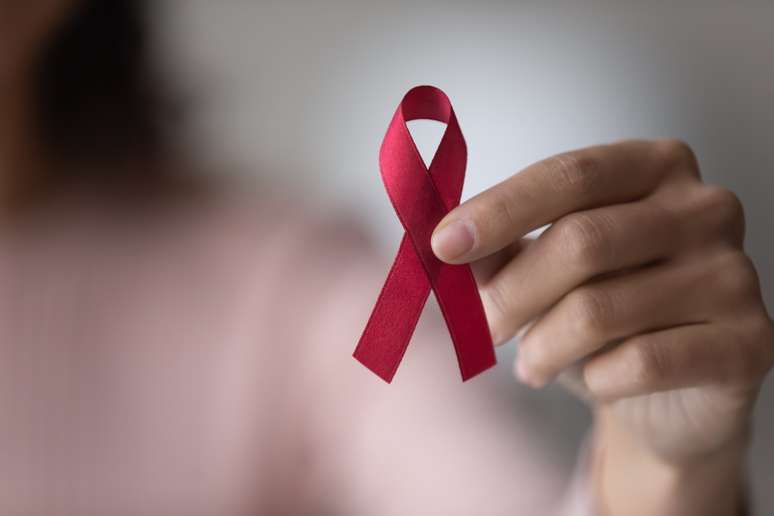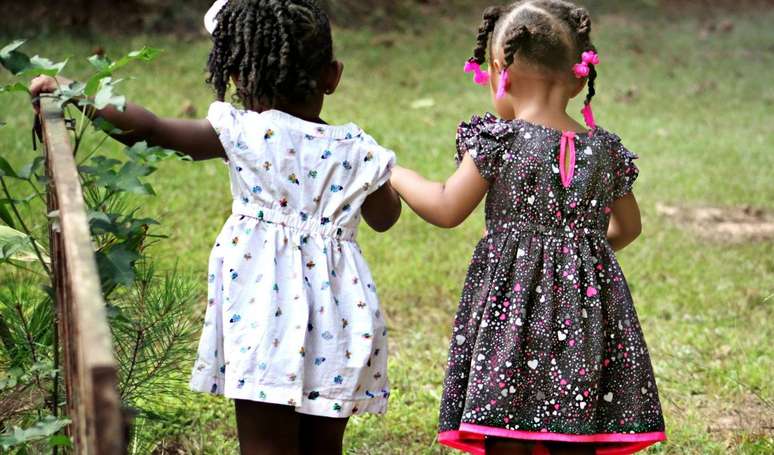The Ministry of Health publishes the bulletin on the eve of World AIDS Day
Over the past ten years, Brazil has recorded a 25.5% drop in the AIDS mortality rate, from 5.5 to 4.1 deaths per 100,000 inhabitants, according to an epidemiological bulletin released by the Ministry of Health on Thursday (30), on the eve of the World Conference. AIDS Day (1st). In 2022, 10,994 deaths from the disease were recorded, 8.5% fewer than the 12,019 recorded in 2012.
Despite the reduction, around 30 people died of AIDS every day last year. Of the total, 61.7% of deaths occurred among blacks (47% among mixed-races and 14.7% among blacks) and 35.6% among whites.
Again according to the bulletin, in the analysis of the race/color variable, it was observed that, until 2013, white skin color represented the majority of cases of HIV infection. In the years since, there has been an increase in reported cases among people of color, and especially among people of color, accounting for more than half of cases since 2015.
In 2022, among cases of HIV infection, 29.9% occurred among whites and 62.8% among blacks (13% of blacks and 49.8% of browns). In the same year, among men, 30.4% of reported cases occurred in whites and 62.4% in blacks (12.8% of blacks and 49.6% of browns); among women, 28.7% of cases occurred in white women and 64.1% in black women (13.8% of black women and 50.3% of brown women).
Even for reported cases of AIDS (which is different from HIV) the scenario is worrying: of the 36,753 diagnosed, 60.1% belong to the black population.
1 million Brazilians with the virus
According to the government, an estimated one million people are living with HIV in Brazil today. Of these, 650,000 are male and 350,000 female.
According to the HIV Clinical Monitoring Report, in the analysis that considers sex assigned at birth, women have worse outcomes at all stages of treatment. While 92% of men are diagnosed, only 86% of women are diagnosed; 82% of men receive antiretroviral treatment, but 79% of women are on treatment; and 96% of men have a suppressed viral load – when the risk of transmitting the virus is zero – but the percentage rises to 94% among women.
A few years ago, the United Nations (UN) defined global goals as follows: 95% of people living with HIV should be diagnosed with HIV; 95% of these people are on antiretroviral treatment; and, of those in treatment, 95% have a controlled viral load. Today, in general figures, Brazil has 90%, 81% and 95% coverage respectively.
Use of pre-exposure prophylaxis (PrEP)
One of the ways to prevent HIV is to use PrEP, a method that involves taking pills before sexual intercourse, which allow the body to prepare to face possible contact with HIV.
The person on PrEP undergoes regular health monitoring, with tests for HIV and other sexually transmitted infections. All states of the federation offer the treatment. In the first half of 2023, PrEP was also included in clinics that monitor the health of trans people.
According to the epidemiological bulletin, PrEP is more accessible to the white population (55.6%), compared to people of color (31.4%), blacks (12.6%) and indigenous people (0.4%).
Currently, 73,537 users are using PrEP, which represents a 45% increase from the previous year.
Among PrEP users in 2023, there are only 12.6% black people, 3.3% trans women, 2% trans men, 0.4% indigenous people and 0.3% of transvestites.
There are still pregnant women without treatment
In 2022, cases of HIV-infected pregnant women prevailed among mixed-race women (52.1%), followed by white women (28.5%). Black pregnant women accounted for 14% that same year.
Diagnosis of HIV in pregnant women is very important in order to apply prevention measures and avoid transmission of the virus to the baby.
Most of the reported pregnant women were already HIV positive before antenatal care, and as of 2022, these women accounted for nearly 60% of cases.
The percentage of antenatal care is high among pregnant/partum/postpartum women with HIV and remained around 90% throughout the analyzed period. However, in 2022, the use of antiretroviral therapy during prenatal care was reported in only 66.8% of cases. This information is important and necessary for the certification of the elimination of vertical transmission of HIV, the goal of which is to achieve treatment coverage equal to or greater than 95%.
The percentage of pregnant/partum/postpartum women who did not use the treatment was 13.5%, and in 19.7% of these, information about the use of the therapy was ignored in 2022, according to data from Sinan .
The data reinforces the need to consider social determinants for effective responses to infection and disease, as well as including key and priority populations overlooked by public policies in recent years.
Source: Terra
Ben Stock is a lifestyle journalist and author at Gossipify. He writes about topics such as health, wellness, travel, food and home decor. He provides practical advice and inspiration to improve well-being, keeps readers up to date with latest lifestyle news and trends, known for his engaging writing style, in-depth analysis and unique perspectives.









